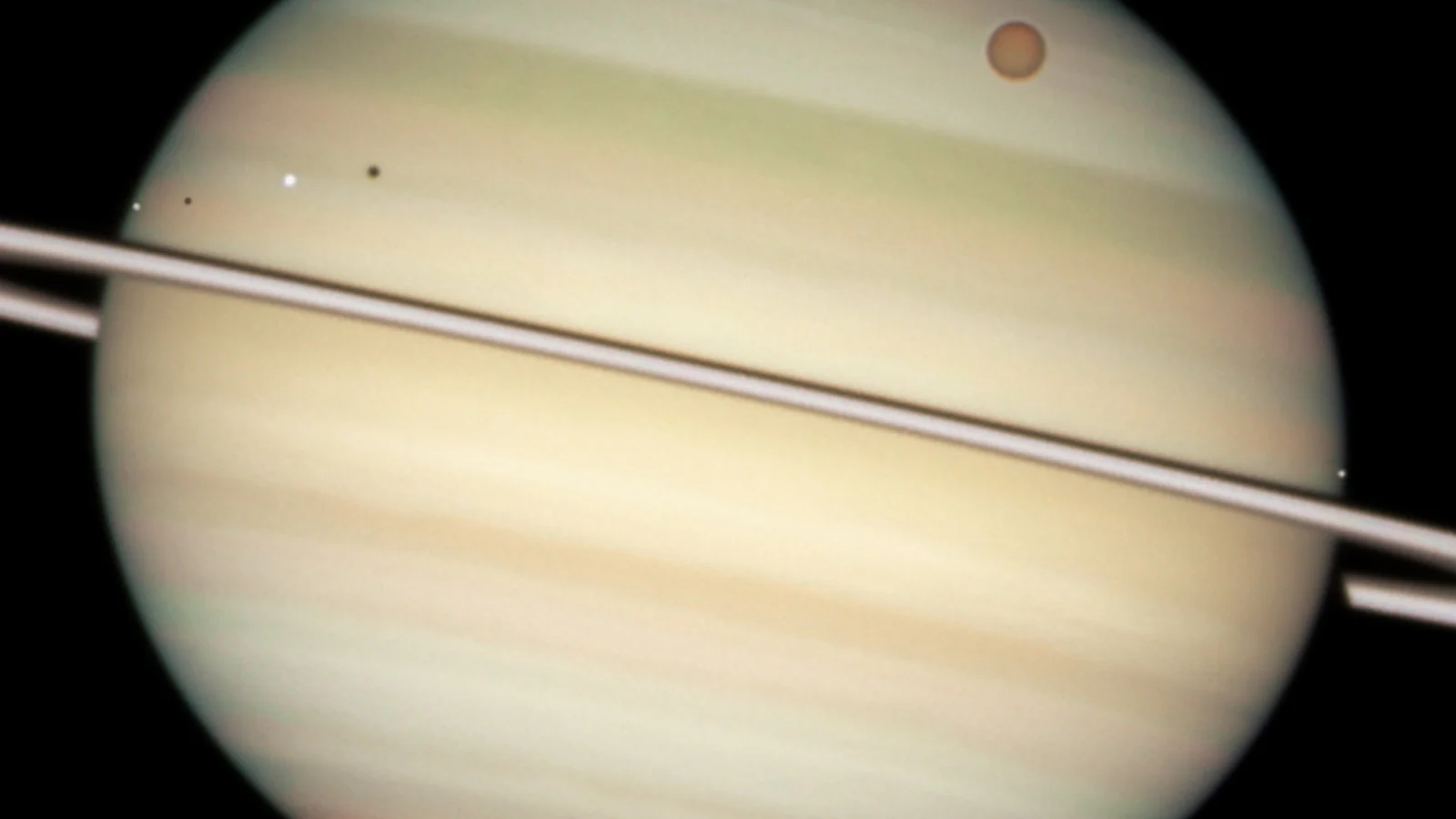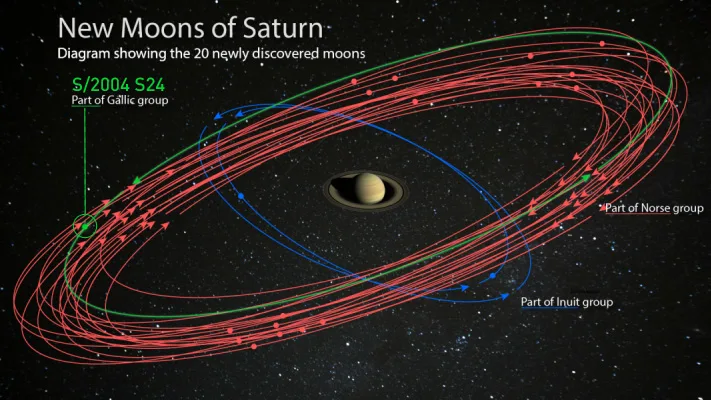
'Oddball' found among Saturn's 20 newly-discovered moons
The Ringed Planet takes the lead for greatest number of moons in the solar system, and even has an 'oddball' of its own!
Jupiter has always been king when it came to having the greatest number of known moons of any planet in the solar system.
A new announcement from Scott Sheppard, an astronomer with the Carnegie Institution for Science, has crowned a new king, though - Saturn.
Based on a new survey of Saturn, Sheppard and his team discovered 20 previously unknown moons orbiting around the ringed planet!
Even with the dozen new moons announced for Jupiter, last year, these new additions bring Saturn's total to 82 moons, beating out Jupiter's total of 79 moons.
"Using some of the largest telescopes in the world, we are now completing the inventory of small moons around the giant planets," Sheppard said in a Carnegie Science news release. These 20 new moons were detected using the Subaru telescope atop Mauna Kea in Hawaii.
"Studying the orbits of these moons can reveal their origins, as well as information about the conditions surrounding Saturn at the time of its formation," Sheppard explained.

An artist's conception of the 20 newly discovered moons orbiting Saturn. Credits: NASA/JPL-Caltech/Space Science Institute/Paolo Sartorio/Shutterstock
These newly-discovered, still-unnamed moons were all initially spotted in 2004. At that time, they had not been observed long enough for Sheppard and his team to verify them and submit them as eligible to be named.
They are all much farther out from the planet than the other known moons, such as Titan and Enceladus, and they are split into three separate groups.
Two (in blue in the above illustration) are 'prograde' moons, orbiting in the same direction as the closer moons. Based on the inclined angle they orbit at, they are considered to be part of the 'Inuit' grouping of moons.
Seventeen others (in red) are 'retrograde moons', all circling Saturn in a cluster of orbits that go the opposite direction as the closer moons. One of these is now the farthest-known moon orbiting Saturn. Based on the angle of their orbit, these moons are all part of the 'Norse' group.
One last one (in green) is an 'oddball', just like Jupiter's 'Valetudo'. It orbits among the retrograde moons, at the same basic angle to the planet, but it travels 'against the traffic', a prograde direction. Even though it orbits among a bunch of Norse group moons, its oddball behaviour puts it as part of the 'Gaelic' group.
"This kind of grouping of outer moons is also seen around Jupiter, indicating violent collisions occurred between moons in the Saturnian system or with outside objects such as passing asteroids or comets," Sheppard explained in the statement.

Two discovery images for the "oddball" prograde moon of Saturn, taken about one hour apart, using the Subaru telescope. The newly discovered Saturnian moon is seen to move against the background stars and galaxies. Credit: Scott Sheppard.
According to Sheppard, each of these newfound moons is around 5 kilometres in diameter. The closer prograde moons take roughly two years to orbit Saturn, and the retrogrades and oddball take over three years to orbit the planet.
YOU CAN HELP NAME THESE MOONS
Each one of these 20 Saturnian moons lacks something essential: a name.
Each has what astronomers call a 'provisional designation'. It is a letter and number code, denoting what it is, when it was discovered, and where it is. For example, Saturn's newfound 'oddball' moon is currently called "S/2004 S24". The 'S/' stands for satellite, '2004' is the year it was discovered, and 'S24' denotes that it was the 24th satellite found around Saturn, during the year 2004.
As an aside: Incredibly, a total of 37 moons were discovered around Saturn in 2004! Thirteen of those have already been named. These 20 have now been observed long enough (at least a year) to verify them. There are still four more that need more observations before they can be verified and named.

Saturn's oddball moon is highlighted here, with its provisional designation. Credits: NASA/JPL-Caltech/Space Science Institute/Paolo Sartorio/Shutterstock/Scott Sutherland
While these 'provisional designations' are useful when you're logging objects into an astronomical catalogue, they're cumbersome and - let's face it - boring.
Sheppard and his team at Carnegie Science want to change that, though, and they want our help!
"I was so thrilled with the amount of public engagement over the Jupiter moon-naming contest that we've decided to do another one to name these newly discovered Saturnian moons," Sheppard said.
So, as of October 7, 2019, a new contest has opened up on the Carnegie Science website, for the public to submit names for these 20 newfound moons.
The rules are straight forward - the name for each moon must be that of a giant from mythology, and each moon's name must come from the mythology of that moon's group.
So, each of the two prograde moons (in blue) will be named after a giant from Inuit mythology. The seventeen retrograde moons (in red) will be named after giants from Norse mythology. The oddball (in green) will be named after a giant from Gaelic mythology (such as one of the Fomorians).
Submit your name suggestions to @SaturnLunacy, using the hashtag #NameSaturnsMoons. If you can submit a reason for your choice, all the better, and sending them an image or video to back up your suggestion is "strongly encouraged".
If you're worried about your suggestion already belonging to some other astronomical object, you can check for it on the International Astronomical Union website.
Source: Carnegie Institution for Science











